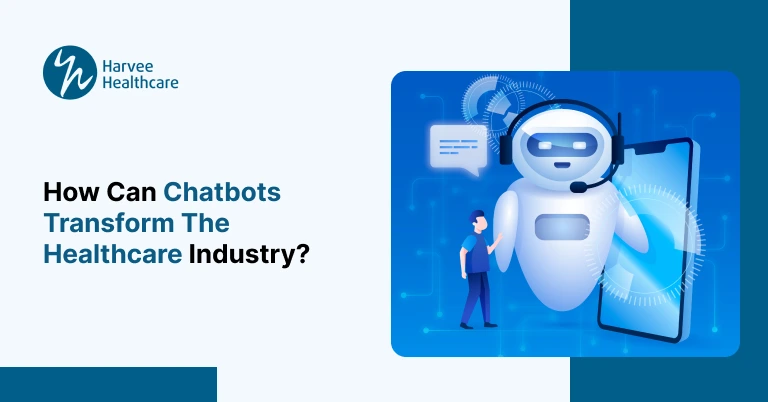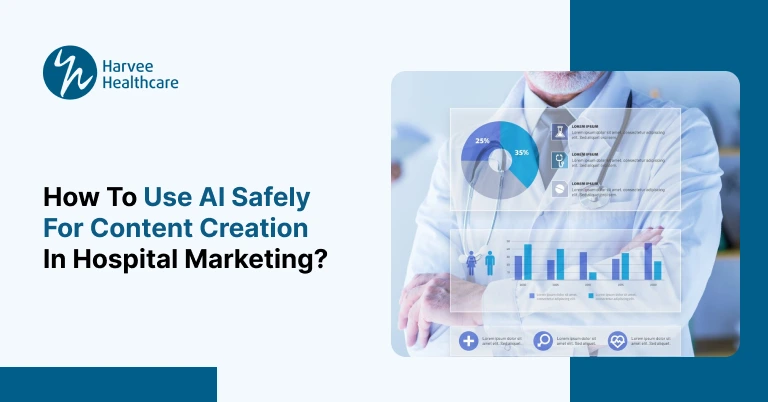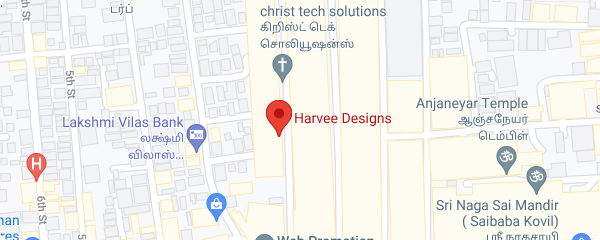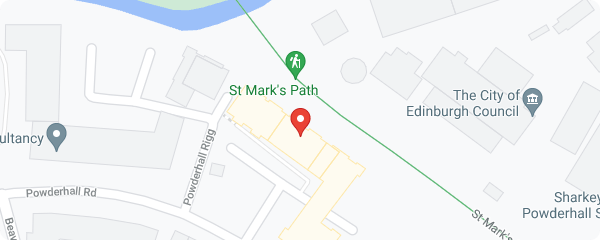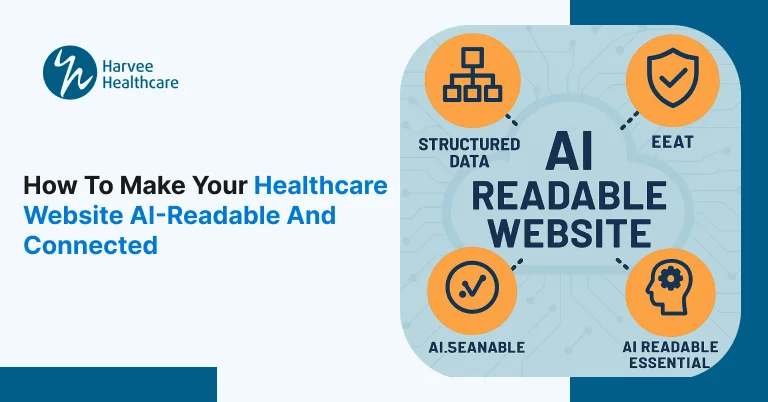
How to Make Your Healthcare Website AI-Readable and Connected
Platforms like ChatGPT, Gemini, and Perplexity are already shaping how people discover medical information. If your healthcare website isn’t structured for AI readability, then you’ve effectively locked your clinic out of the modern web. When patients ask the trending and upcoming AI models questions about symptoms or treatment, only the best-structured and trusted content is used.
Above all, your healthcare website needs to be AI-readable so that your content can be visible on generative AI platforms like Gemini, chat GPT, Claude, Preplexity, and more. This guide breaks down the technical, architectural, and semantic requirements to ensure your healthcare website is optimized for machine readability and deep AI integration.
“AI isn’t coming. It’s already here.” – So focusing on AI readability is necessary, but it also differs from traditional SEO and web development. BrightEdge reports over 40% of online sessions already involve AI summarization. It’s not a trend; it is a new baseline.
It’s all about writing and structuring your content so machines understand context, relationships, and relevance. Continue reading to know more about making website AI readable.
Build structure, not just pages
Never follow a traditional SEO method of posting articles by taking keyword volume. Make a plan by creating a content architecture using topical clustering where the core topic is linked to the subpages. These relationships help large language models establish topical authority. Interlink them meaningfully to achieve the topical authority. Use SEO Spider to successfully achieve internal linking, as they have schematic and N-gram options to help you.
For example, you are the best dental clinic for implants in Dubai and need to target implant leads in your local and international markets. The best way to build a topical authority for dental implants is by making content architecture that connects the core dental implant page to each type of implant, specialists, before and after, and post-operative care.
Semantic HTML isn’t just nice, it’s necessary
Don’t rely on endless <div> tags. Use HTML5 tags like <article>, <section>, <header>, and <main>. These elements show AI how to understand the shape and purpose of your content. Semantics matter more than layout. You’re writing for humans and machines now.
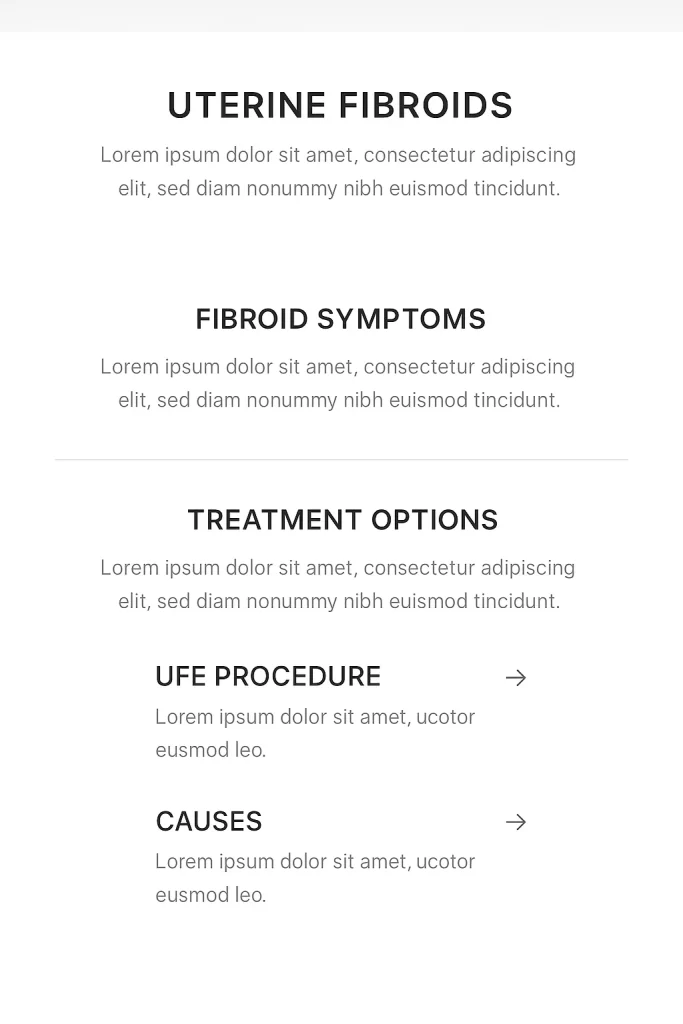
Use schema to be understood, not just crawled
Search engines and AI models use schema to make sense of what they’re reading. For healthcare, use schema.org types like MedicalWebPage, MedicalCondition, LocalBusiness, Physician, FAQPage, and Review. Use the Person schema for every doctor and specialist. Embed breadcrumbs and update timestamps.
For example, generative AI displays the result for a query “List some best dentists in Dubai” with the dentists’ names listed in bullet points along with their experience and clinic name. Whereas Google SERP just displays the site. So, adding schema is not just for readability but also for machines to understand and structure our content.
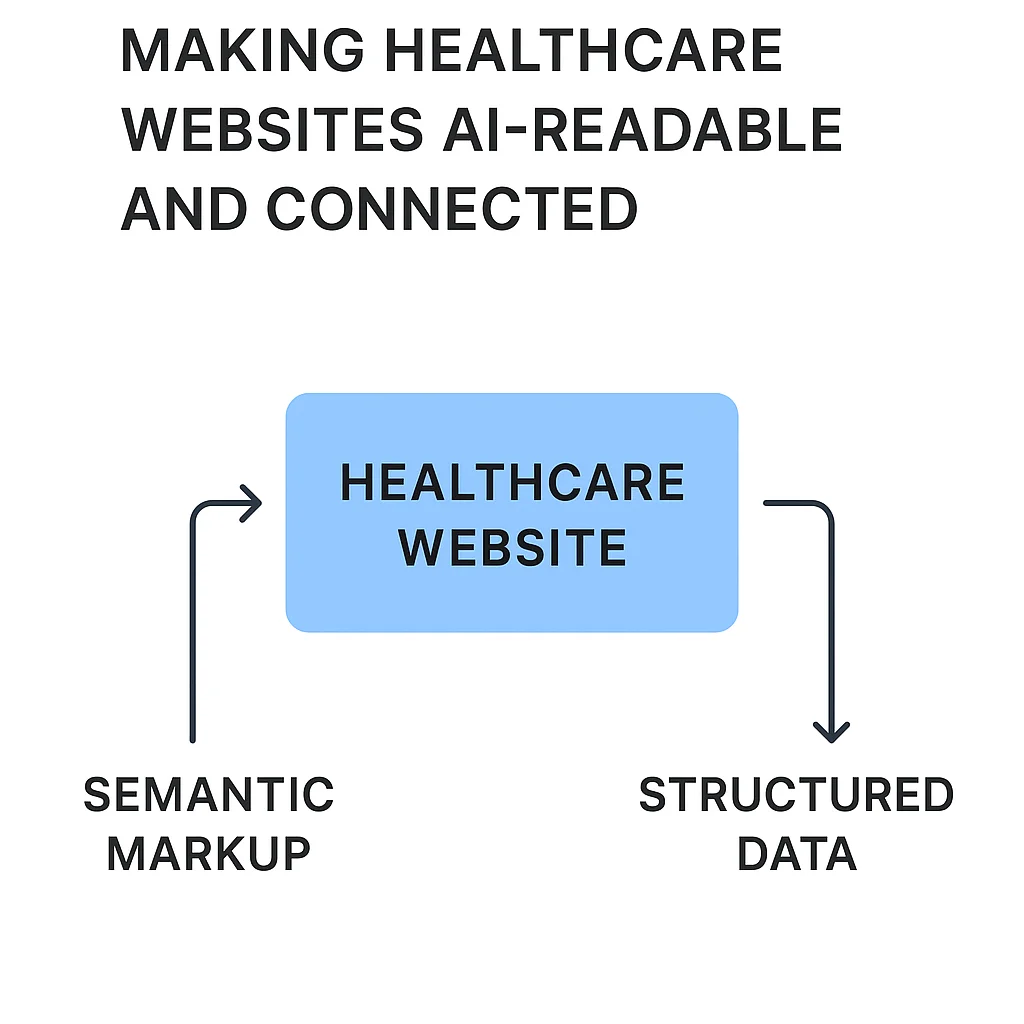
Crawlability is about what you allow—and what you don’t
Let GPTBot and GeminiBot be on your site through robots.txt. Create a dedicated AI sitemap. Don’t include outdated, thin, or duplicate content. Keep metadata simple. AI prefers pages without bloated script tags.
Give clear, reliable answers
AI pulls responses from websites that answer user intent directly. Don’t bury definitions. Start with a straight answer, then elaborate. Support it with citations from reliable sources like NIH, Mayo Clinic, or PubMed.
Speak medically and naturally
If you’re writing about fibroids, mention terms like leiomyoma, embolization, and heavy bleeding. Use medical terms and plain English in tandem. You’re not keyword-stuffing. You’re teaching the model.
AI finds your content in new places
You’re not just competing on Google. Sites now surface inside ChatGPT, voice assistants, and AI summaries. If your content isn’t structured, it won’t be found. PDFs and flat HTML won’t cut it.
Mark up your FAQs and enable Speakable schema
Use FAQPage and Speakable schema correctly. This helps screen readers and voice bots parse answers cleanly. Also, stop using image-based guides and scanned documents. They’re invisible to models.
Establish [EEAT] as infrastructure
Google evaluates content based on EEAT: expertise, experience, authority, and trust. AI platforms do, too. Tag authors with credentials using the Person schema. Link to published studies. Show real reviews and update dates.

Connect your site to AI tools
Use AI tools so your content does more than inform and let it interact.
- FHIR-compatible((Fast Healthcare Interoperability Resources)) APIs for EHRs (Electronic Health Records)
- Embed AI chat assistants
- Add real-time tools like symptom checkers.
Takeaway
An AI-readable website isn’t just about structure. It’s all about trust, utility, and clarity. Write like someone will quote you in a chatbot because they probably will. AI reads deep, but it doesn’t improvise. So, give it what it needs: semantic structure, schema markup, consistent terminology, and medically sound writing.
If your goal is to serve patients, you have to meet them where they’re searching, and increasingly, that’s inside an AI interface.
If you’re serious about upgrading your digital presence, contact Harvee Health. We’re a healthcare-specialized digital marketing agency with experienced designers, developers, and SEO experts who work together to build AI-optimized websites that perform in both search and conversation.


